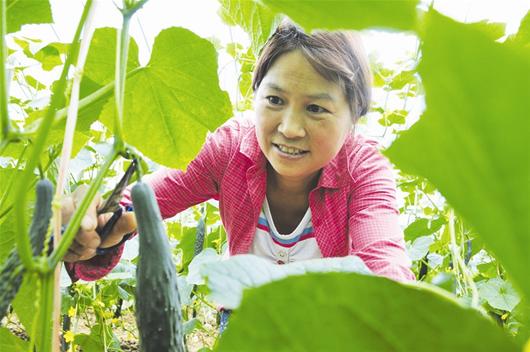The successful Secret Book of the veteran Shrimp Culture of Penaeus vannamei in 11 years
Wu Yindian is a native of Daao Town, Xinhui District, Jiangmen City, Guangdong Province. He has cultivated Penaeus vannamei for 11 years and now has 40 mu of shrimp ponds. In 2013, Wu Yindian succeeded in raising two shrimps, with an average yield of about 600 jin per mu, benefiting from the high shrimp price in 2013. In addition, the shrimp in the winter shed is growing well.
"the market of any variety will inevitably have ups and downs, and there will also be a period of frequent occurrence of diseases. Paying attention to details and paying attention to changes in the culture environment is the primary factor in my success in raising shrimp." Wu Yindian told reporters that in order to refine the management, the couple took turns to take care of the shrimp ponds, and all shrimp farming matters were done by themselves. With the change of environment and the increasing difficulty of breeding, he also took the initiative to reduce the seedling density, from 70-80 000 / mu to 40-50, 000 / mu, in order to improve the success rate of culture and trade the success rate for yield.
After years of farming, Wu Yindian himself has summed up a set of shrimp farming classics. Wu Yindian told the reporter that unlike the general choice of second-generation seedlings and soil seedlings in the past, he is now more inclined to choose first-generation seedlings, but the first-generation seedlings are growing fast and relatively weak in disease resistance. The first generation of seedlings grow fast and molt many times, so there is a great demand for calcium. Wu Yindian observed that there is often a peak period for shrimp molting around the first and fifteenth day of the lunar calendar, so he pays close attention to the foraging of prawns during this period. "in general, shrimp foraging is reduced, which is a sign that shrimp will molt. At this time, I will replenish calcium to these prawns that are about to molt."
In addition to paying attention to calcium supplements throughout the process, with the continuous growth of prawns, Wu Yindian's management of culture at different stages is also different. He divided the breeding into three stages, the first stage being 30 days before breeding. This stage is an important period for the liver development of shrimp, and the management and drug use need to focus on helping the liver development. A white liver represents a well-developed liver, while yellow represents an unhealthy liver. The second stage is for breeding for 30-60 days. Although this stage enters the high-speed growth period of shrimp, it is also the peak period of feeding, during this period, attention should be paid to controlling the amount of feeding, not only to ensure the growth of shrimp, but also not to overfeed, so as to avoid excessive burden on the liver and prevent the residual bait from polluting the water. In the third stage, prawns were cultured for 90 days. Nitrite is easy to be on the high side at this stage, so we should focus on changing the bottom and appropriately increase the dosage of microecological agents.
- Prev

The family farm Fushan Township, the greenhouse vegetables are popular everywhere.
The family farm Fushan Township, the greenhouse vegetables are popular everywhere.
- Next

Leisure agriculture in Datong County has made 340 million this year.
Leisure agriculture in Datong County has made 340 million this year.
Related
- A course of planting techniques and methods on how to grow carrots
- How to plant the latest tulips?
- Is it better to pick tea in the morning or in the afternoon? When is the best time for tea to be picked? what is the third or fifth tea?
- Launch Yuanxiao Happy combination Haocha + Tea Yuan healthy Taste
- Penghu Tourism "Fireworks 20 Parade with You"
- 2022 West Lake Happiness holds "Digital Revitalization Voucher" and draws iphone13 and laptop.
- Banqiao Fuzhou social houses are designed to change start-up combined with police elimination to create a safe and livable environment
- The convenient measure of "mechanical weeding" in Xinbei has been abused and the Agriculture Bureau has imposed heavy penalties on the illegal land consolidation.
- Changgeng University Joins Hands with Four Memory Factories to Rescue Memory Talent Shortage
- The list of Taiwan's top 100 MVP managers is listed by the Director-General of the Farmers' Association of Sanxia District.

